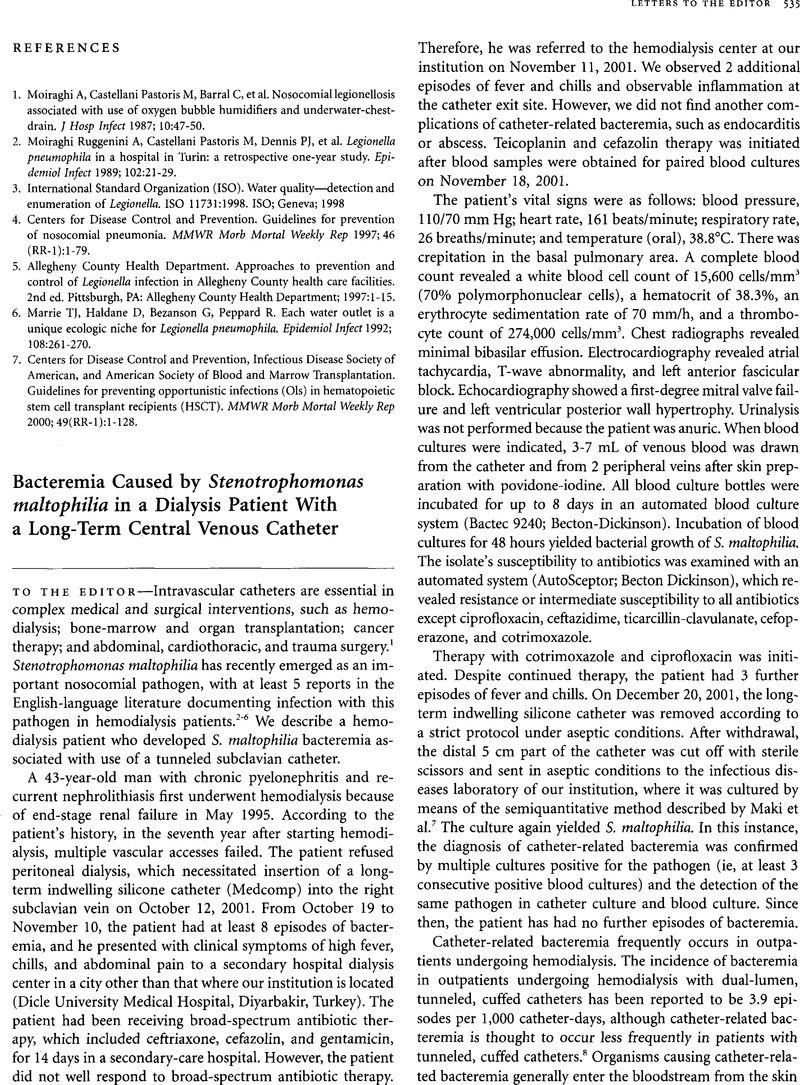Crossref Citations
This article has been cited by the following publications. This list is generated based on data provided by Crossref.
Alexandraki, Irene
Sullivan, Robert
Zaiden, Robert
Bailey, Christina
Khan, Akram
Nahman, N. Stanley
Mccarter, Yvette
Offutt, Julie K.
Bhatt, Udayan Y.
and
Plott, Darcy
2008.
Blood Culture Isolates in Hemodialysis Vascular Catheter-Related Bacteremia.
The American Journal of the Medical Sciences,
Vol. 336,
Issue. 4,
p.
297.
Abbott, Iain J
Slavin, Monica A
Turnidge, John D
Thursky, Karin A
and
Worth, Leon J
2011.
Stenotrophomonas maltophilia: emerging disease patterns and challenges for treatment.
Expert Review of Anti-infective Therapy,
Vol. 9,
Issue. 4,
p.
471.
Zhou, Zhou
Guo, Dongyang
Zhang, Fan
Wang, Tao
and
Zhang, Guangming
2013.
Predictors of Failure of Catheter Salvage in Incident Hemodialysis Patients.
The International Journal of Artificial Organs,
Vol. 36,
Issue. 5,
p.
320.
De Mauri, Andreana
Torreggiani, Massimo
Chiarinotti, Doriana
Andreoni, Stefano
Molinari, Gianlorenzo
and
De Leo, Martino
2014.
Stenotrophomonas
maltophilia: an emerging pathogen in dialysis units.
Journal of Medical Microbiology
,
Vol. 63,
Issue. 11,
p.
1407.
Jia, Wei
Wang, Jiayuan
Xu, Haotong
and
Li, Gang
2015.
Resistance of Stenotrophomonas maltophilia to Fluoroquinolones: Prevalence in a University Hospital and Possible Mechanisms.
International Journal of Environmental Research and Public Health,
Vol. 12,
Issue. 5,
p.
5177.
K. Thet, May
Pelobello, Ma. Lourdes F.
Das, Milton
Alhaji, Mohammed M.
Chong, Vui Heng
Khalil, Muhammad Abdul Mabood
Chinniah, Terence
and
Tan, Jackson
2019.
Outbreak of nonfermentative Gram‐negative bacteria (Ralstonia pickettii and Stenotrophomonas maltophilia) in a hemodialysis center.
Hemodialysis International,
Vol. 23,
Issue. 3,



